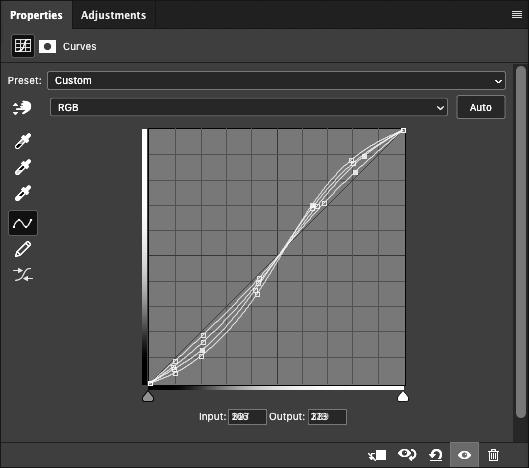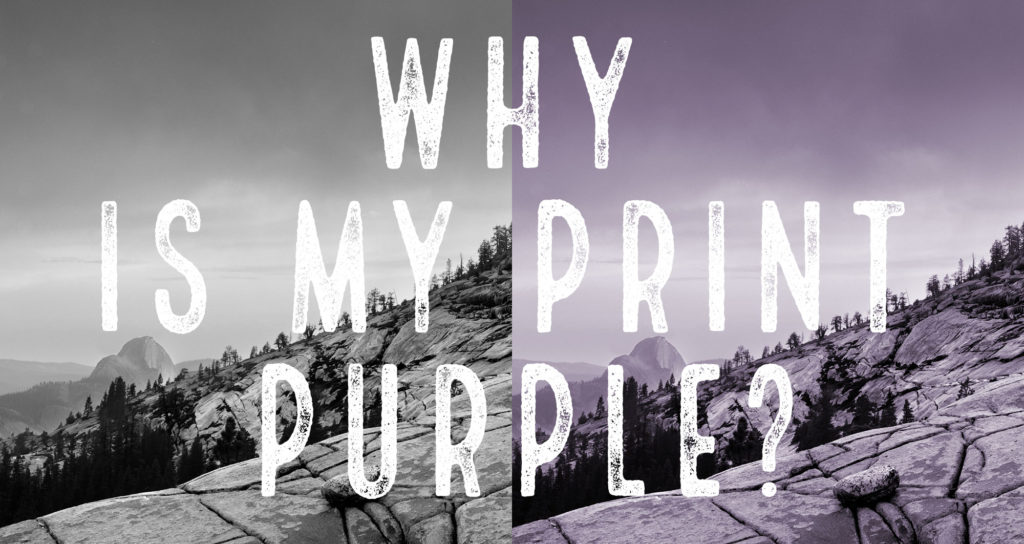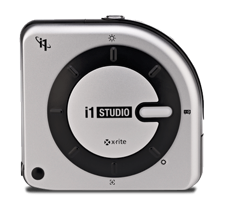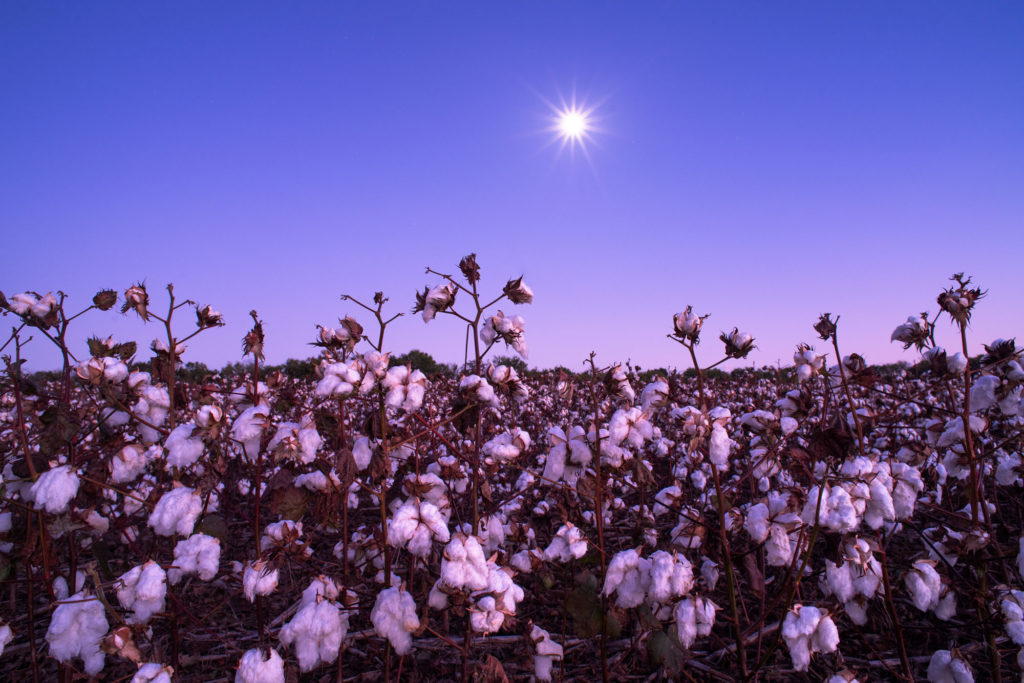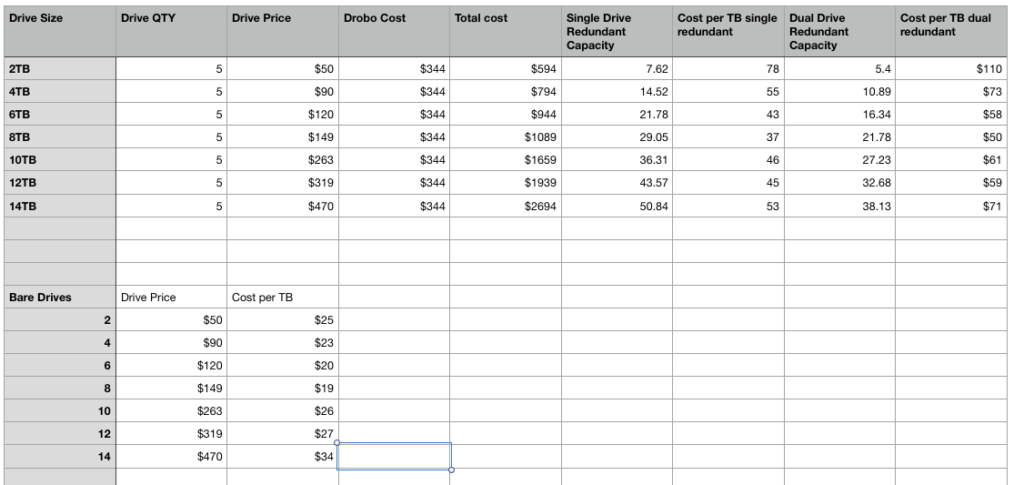
UPDATED 2019-10/31 with link to Google Sheet
At what point is buying a Drobo worth it compared to using single external drives? And what size drives should you buy for the best value? To help a friend with this question and satisfy my curiosity, I created this spreadsheet that you can access on Google Sheet.
Using 8TB drives gives the best value per TB. If you need more than ~21TB (dual drive redundancy), it’s cheaper to buy a second Drobo than it is to use 10TB, 12TB, or 14TB drives. And “upgrading” the drives in an existing DROBO usually isn’t worth it, unless all your drives are so old that they just need replacing anyway.
PRO TIP: Drobo is NOT a backup. It merely makes your master data more resilient to drive failures. A backup is a separate copy on a separate device, and you need two backups. Keep one backup off site to protect agains fire, flood, theft, tornados, hurricanes.
If you are going to buy a Drobo, use my Amazon Affiliate links and I’ll get a small commission:




